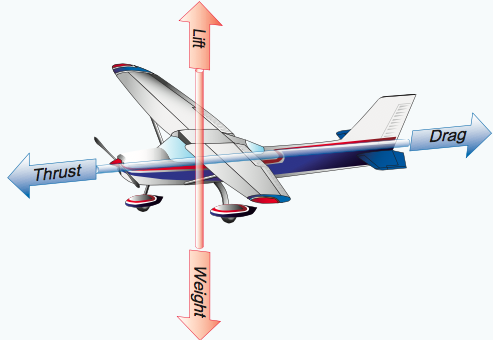The Four Forces Of Flight
In general, an airplane in flight has four forces acting on it:Thrust
Thrust is the force generated by the propeller(s) or jet engines on an airplane. It is opposed by drag, and the combination of the two account for the airplane's horizontal speed in straight-and-level flight.Drag
Drag, as said above, it the force that opposes thrust. Drag is created by many surfaces on the airplane, including the wings (lift-induced drag), nut they can be simplified to a single force in a free-body diagram.Lift
The wings of an airplane generate lift. Though it will be explained more in another page, the angle of attack of the wings is what determines how much lift is produced. Normally, but not always in aerobatics, lift is greater than weightWeight
Weight is also known as the force of gravity, and it the gravitational force due to the acceleration of gravity on the airplane, as with any mass. Weight can increase due to maneuvers performed in flight.
A stylized free body diagram for the forces acting on an airplane in staight and level flight.
(Photo: The Pilot's Handbook Of Aeronautical Knowledge)